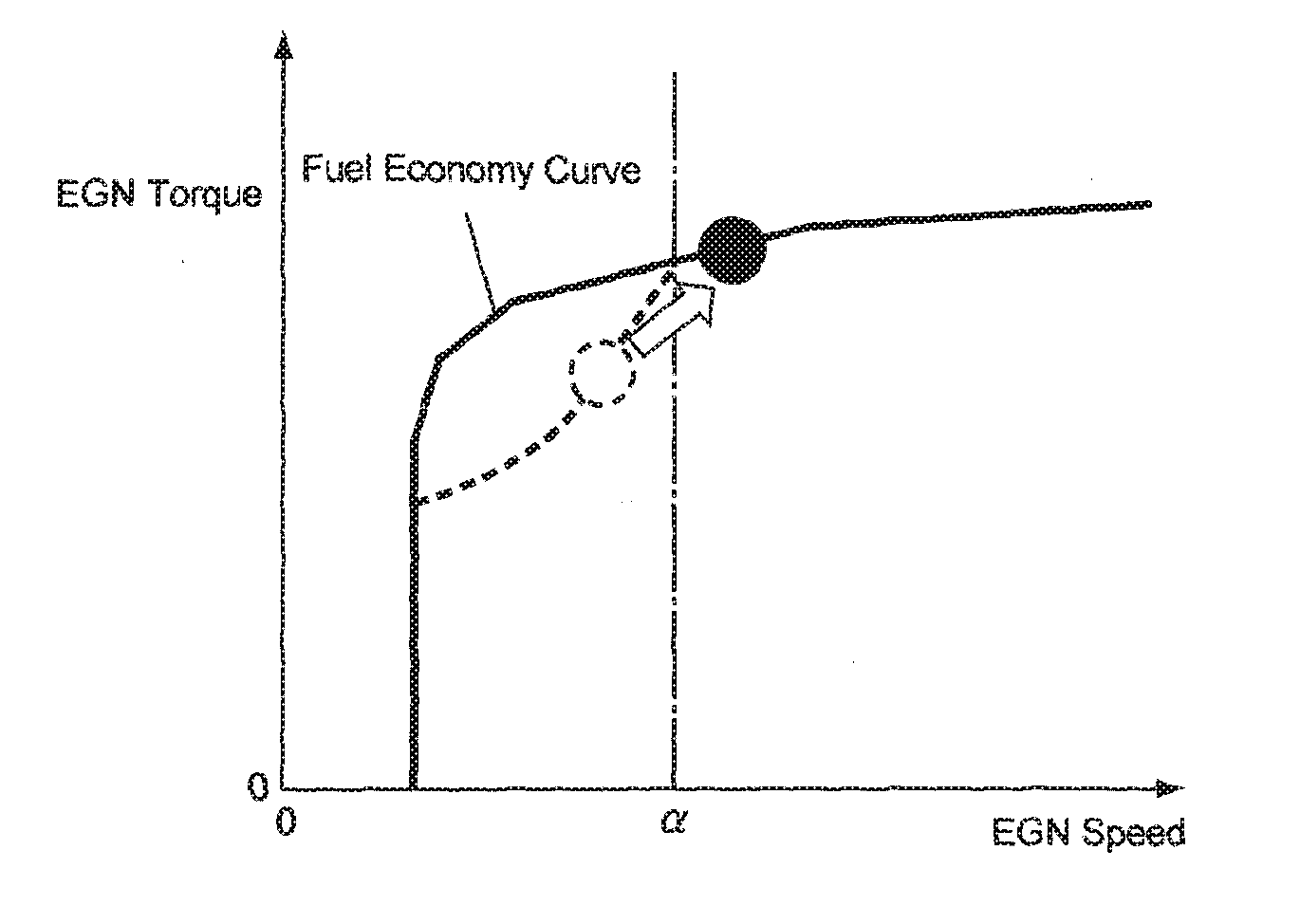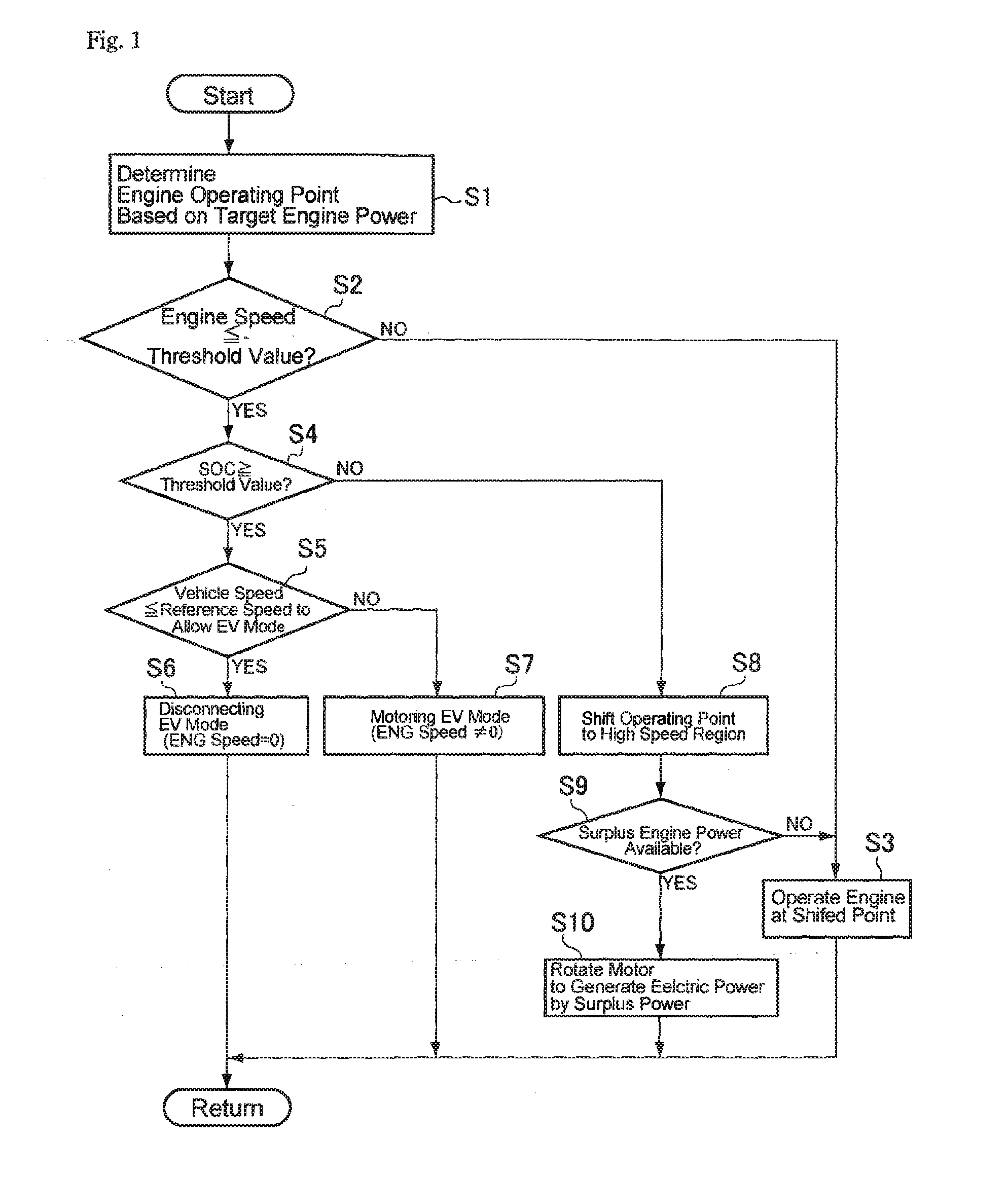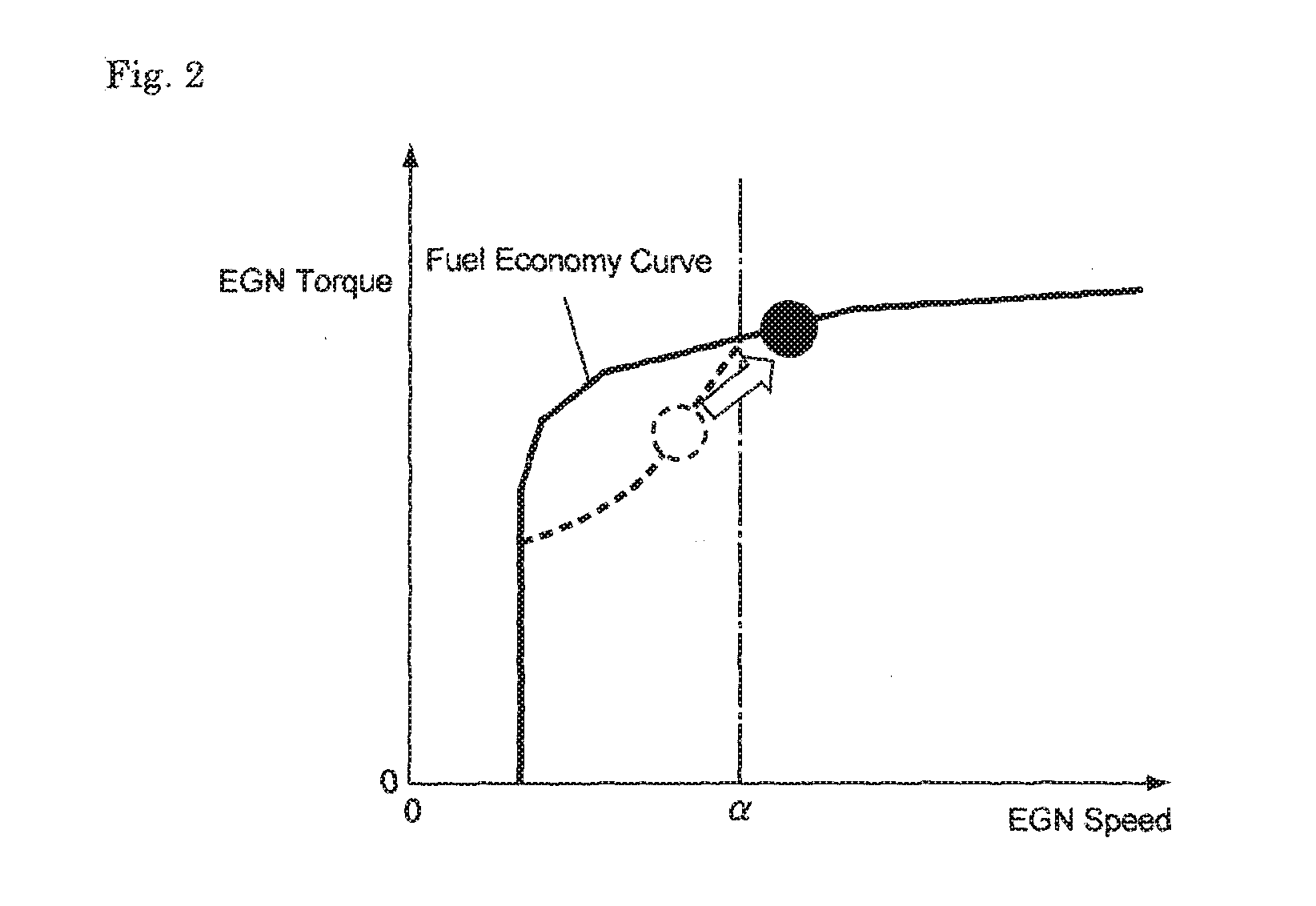Control system for a vehicle
a control system and vehicle technology, applied in the direction of engine-driven generators, road transportation, transportation and packaging, etc., can solve the problems of noise, vibration, harshness, noise, etc., and achieve the effect of preventing damage, high stiffness, and improving the acceleration response of the vehicl
- Summary
- Abstract
- Description
- Claims
- Application Information
AI Technical Summary
Benefits of technology
Problems solved by technology
Method used
Image
Examples
Embodiment Construction
[0020]The vehicle control system of the present disclosure is applied to a vehicle having a clutch for selectively disconnecting the engine from the power train. For this purpose, the clutch is adapted to be engaged gradually while changing a torque transmitting capacity thereof.
[0021]An example of a power train of the vehicle to which the present disclosure is applied is illustrated in FIG. 3. In the vehicle shown in FIG. 3, the power of the engine (ENG) 1 is partially transmitted to the driving wheels 2 by a mechanical means. The remaining power of the engine 1 is once converted into an electric power, and then converted into a mechanical power again to be transmitted to the driving wheels 2. In order to distribute the power of the engine 1, a power distribution device 3 is disposed on the power train 10. As the conventional two-motor type hybrid drive units, a single-pinion type planetary gear unit adapted to perform a differential action among three rotary elements is used as th...
PUM
 Login to View More
Login to View More Abstract
Description
Claims
Application Information
 Login to View More
Login to View More - R&D
- Intellectual Property
- Life Sciences
- Materials
- Tech Scout
- Unparalleled Data Quality
- Higher Quality Content
- 60% Fewer Hallucinations
Browse by: Latest US Patents, China's latest patents, Technical Efficacy Thesaurus, Application Domain, Technology Topic, Popular Technical Reports.
© 2025 PatSnap. All rights reserved.Legal|Privacy policy|Modern Slavery Act Transparency Statement|Sitemap|About US| Contact US: help@patsnap.com



